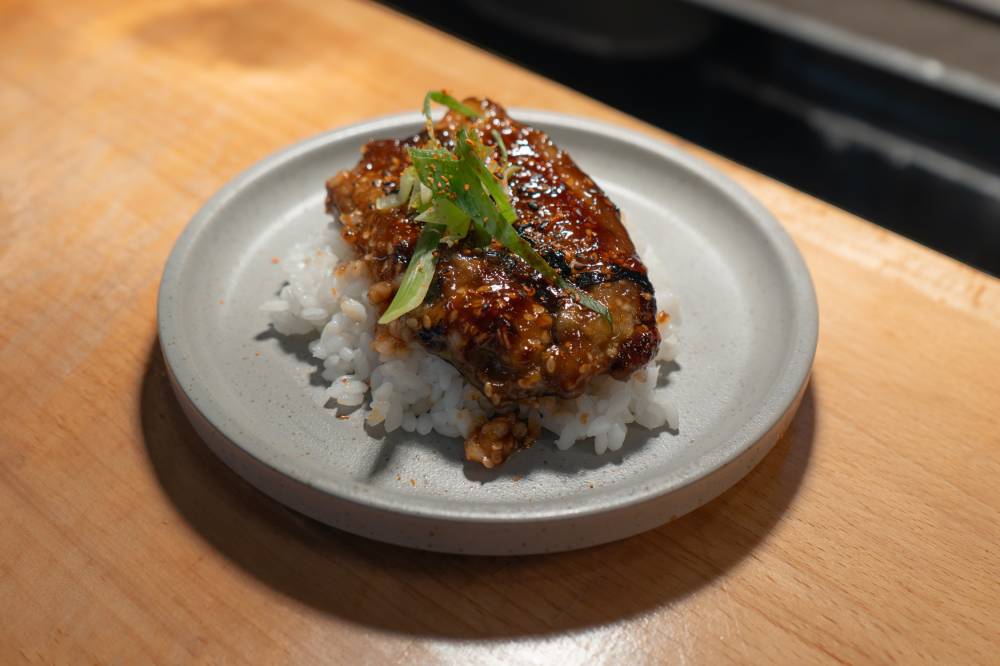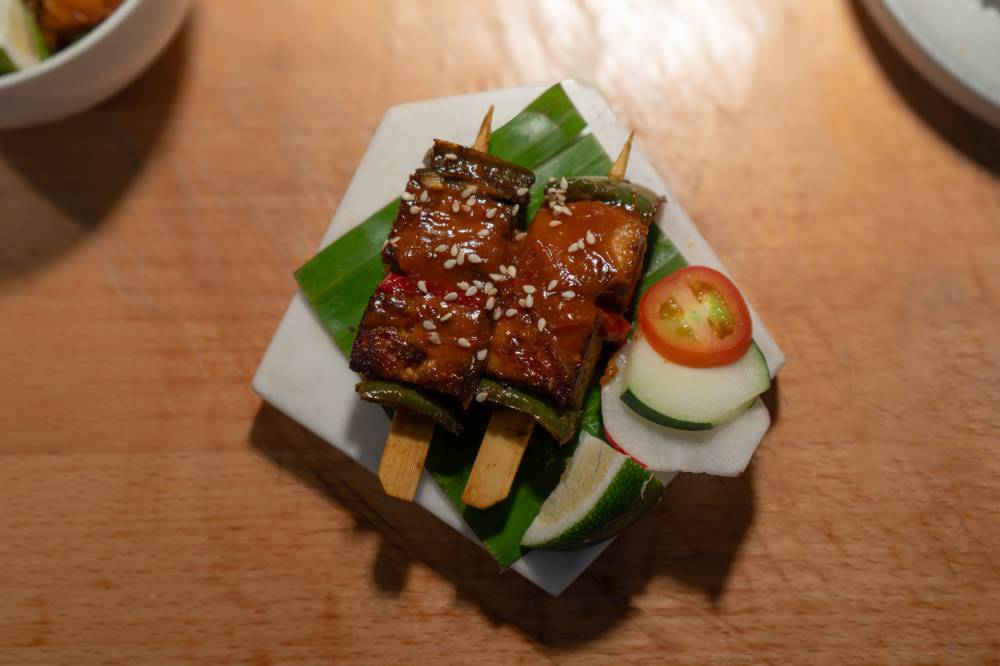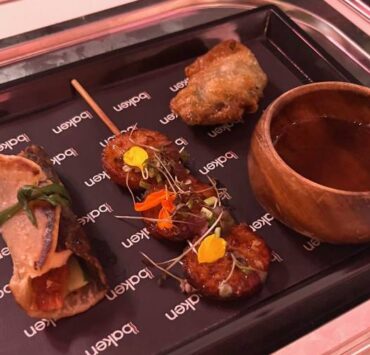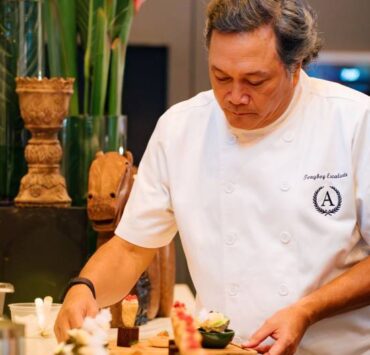The secret to great plant-based food? It’s all in the sauce

Cinty Yñiguez, a vegan chef, educator, and wellness consultant, has long been blending health, flavor, and nostalgia.
“I wanted to eat what I grew up with, but plant-based,” she said. “That became the challenge.”
Yñiguez, who trained in culinary nutrition and teaches yoga, recalls writing her own recipes as early as age 12, inspired by her mother, a culinary professional. But unlike in her mother’s kitchen, Yñiguez’s cooking today is entirely plant-based—no meat, dairy, or seafood.
Now, as guest chef for Westin Manila’s “Green Mondays” program, Yñiguez has designed a seven-dish tasting menu showcasing plant-based interpretations of Asean favorites. The dishes are featured every Monday of June at the One Dish Wonders live station at Seasonal Tastes.
Yñiguez believes sauces are the soul of Southeast Asian cuisine—and the key to plant-based transformation. “Sauces are magic,” she said. “They bring everything to life. I learned that when you strip meat of its sauce, it’s just texture. Mushrooms or jackfruit can do the same job.”
To make her own hoisin, for example, she replaces shrimp paste with dashi made from seaweed, then layers it with cloves and allspice for complexity.

Asian flavors
“I study how each country uses texture, flavor, spice, and aroma,” she said. “When you put it all together, you get something with so many layers.” Through layered sauces and thoughtful substitutions, Yñiguez makes plant-based food accessible and exciting.
Launched last November, “Green Mondays” is part of the hotel’s broader “Eat Well” program, a sustainability initiative that champions zero-waste menus and nutrient-dense dishes using familiar flavors. Previous editions have featured local chefs, brands, and artisans.
Many of Yñiguez’s dishes share signature ingredients that help her recreate Southeast Asian flavors. Coconut nectar and coconut aminos—both used in place of soy sauce—bring sweetness and umami without the sodium. Sesame seeds add depth and texture, while nuts, especially cashews, are the foundation for creamy condiments.

Cashews, she explains, are a go-to base for sauces like satay and spicy peanut. “What people don’t realize is these are the building blocks,” she said. “Once you know how to use them, you can make so many amazing dishes.”
Jackfruit is another cornerstone of her kitchen, as is heart of palm. Rich in fiber, minerals, and vitamins, jackfruit has a fibrous texture that mimics shredded meat when cooked. “It’s such a great substitute for animal protein,” she said. “You just need a bit of patience. You have to clean it, break it down. But once you do, it’s incredibly versatile.”
The Crispy Szechuan Mushroom riffs on the fiery Szechuan chicken served in Hong Kong and mainland China. Instead of meat, she uses shredded mushrooms, pan-fried and coated in a bold, tamarind-hoisin Szechuan sauce. It’s intensely spicy, thanks to generous amounts of Szechuan pepper. But the heat, she notes, can be adjusted to bring out more of the dish’s complexity and layered flavors.
Other dishes draw on the region’s signature balance of sweet, sour, and spicy elements. Her Vietnamese spring rolls are paired with a vegan nuoc cham—traditionally made with fish sauce—here reimagined with seaweed and other ocean-based ingredients to provide that familiar salty, umami backbone. “You still get that fishy note, but it’s all plant-based,” she said.

Guilt-free noodles
The Skinny Pad Thai, made with shirataki noodles, are low-calorie, carb-free strands derived from konjac yam. This guilt-free dish is coated in a tangy, spicy tamarind sauce, blended with a vegetarian alternative to oyster sauce and enriched with a creamy peanut sauce. To finish, she sprinkles it with her product, Naked Food’s Thai-style cashew topping, which includes curry spices, lemongrass, seeds, and dried coconut.
“It gives it that texture and flavor punch,” she said. Instead of a traditional egg topping, she uses a vegan substitute made from chickpea flour and black salt that mimics the taste and richness of real egg.
The Satay Tofu and Peanuts highlight grilled, marinated tofu topped with a creamy satay sauce made from peanuts, cashews, and coconut nectar. The sauce is lightly spiced with curry and lemongrass, and finished with crushed roasted peanuts for texture.
Her Eggplant Unagi channels the sweet, slimy flavor of Japanese grilled eel. The eggplant is glazed in a house-made kabayaki sauce using coconut aminos or tamari in place of soy, agave syrup for sweetness, and seaweed to mimic the briny depth of seafood. The slices are shallow-fried until lightly crisped, allowing the glaze to cling and caramelize.
A standout is her vegan bulgogi. “It was the most fun to create,” Yñiguez said. “Getting the texture right was the challenge.” She uses jackfruit as a substitute for beef, tearing it apart and reassembling it so the fruit’s distinct flavor disappears under layers of savory bulgogi sauce. Served over cabbage kimchi, it mirrors the rich, spiced depth of the Korean original.
For dessert, she presents a no-bake, plant-based take on Banoffee Pie, a Filipino favorite. It features raw lakatan bananas, dairy-free cream and milk, and a homemade vegan graham crust made with cacao, plant-based butter, and a natural sweetener.
“The graham cracker base adds nuttiness and a bit of caramelization,” she said. The dessert is finished with her signature caramel sauce, made in-house and layered just thick enough to coat but not overwhelm.

















